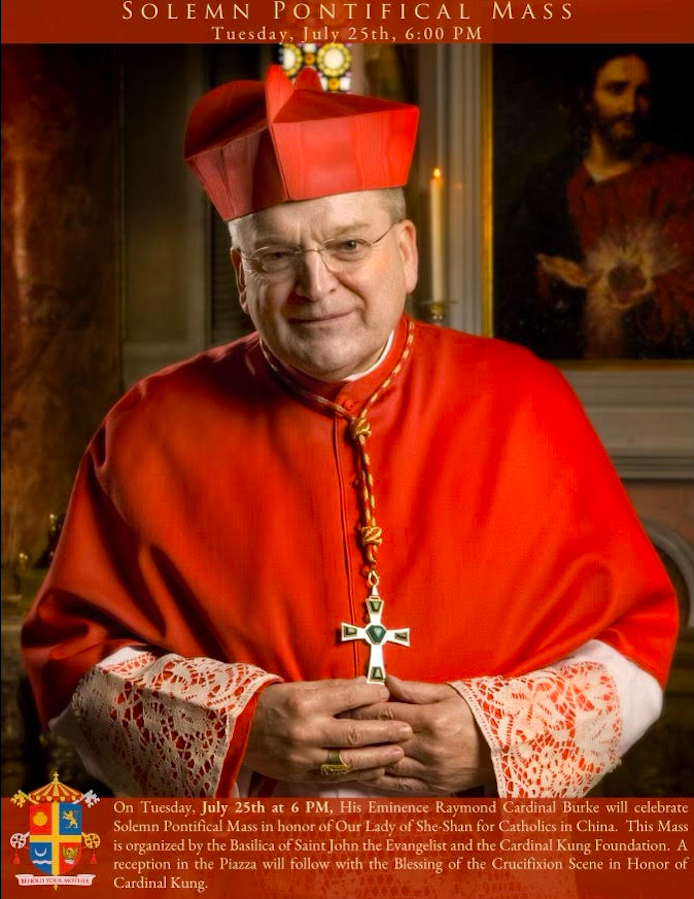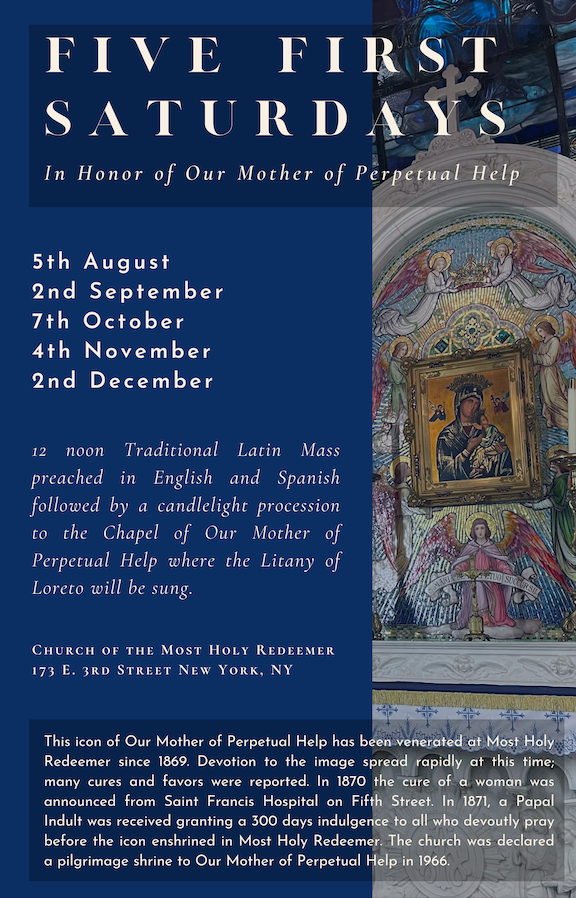
24
Jul
23
Jul
Peter Seewald has given a remarkable Interview published in Kath.net. The original is to be found here; an English translation here. What is remarkable, first of all, is the man who is speaking. We have reviewed several books by Peter Seewald, written in collaboration with Benedict XIV ( posted here and here). Those of you who have read them know that I have had serious reservations regarding Peter Seewald’s books. He and Benedict tried to continue the party line of the Church establishment: within the Church all is peace, unity and continuity of policy. Here and there in his most recent biography of Pope Benedict, however, Seewald could no longer follow this course. And in this new interview he definitively breaks with it.
Seewald declares that the floodgates have opened! He describes the radical break the policies of Francis represent with those of his predecessors Benedict and John Paul. He details the insults and contemptuous treatment meted it out by Francis to Benedict, Mueller, Gänswein – the list is a long one. He frankly describes the incompetence and worse of Francis’s associates: McCarrick, Danneels and most recently Victor Fernandez. And he frankly faces the potentially apocalyptic consequences of the pope’s current course of action.
I would single out the emphasis Seewald gives to Pope Francis’s attack on the traditional liturgy – he rightly considers Summorum Pontificum a key achievement of the Benedictine papacy. This passage of the interview is even more remarkable because as recently as 2020 Seewald himself seemed completely unaware of the significance of that motu proprio. 1)
All this is a remarkable change in direction – from a would-be member of the establishment, if a conservative one, to an outspoken critic of it. We have seen over the years numerous other examples, however: Daniel Mahoney, Aldo Maria Valli and even George Weigel. The confrontational radicalism of Francis’s course is driving an ever-greater number of potential allies into the opposition. A major role in Seewald’s “conversion” is the death of his long-term interview partner, Pope Benedict, which obviously frees him from the constraints imposed by Benedict’s reverence for the Council and the Church establishment.
Of course, it is equally remarkable that this interview appears on Kath.net, a “conservative” Austrian site that has desperately striven to maintain relations of some kind with the German Church and the papacy of Francis – and to distinguish themselves from the traditionalists. They too may have reached the end of the rope.
Of course, some observers had seen the dam breaking 10 years ago. Seewald rightly says that Francis “from the first day of his pontificate sought to distance himself from his predecessor” – an insight that Pope Benedict and Seewald repeatedly denied for ten years in their jointly published works. Nevertheless, “better late than never!” I will welcome more contributions from the now unleashed Peter Seewald based on his extensive contact with Ratzinger over the decades.
- Seewald, Peter, Benedikt XIV. Ein Leben at 872-76 (Droemer Verlag, Munich, 2020)
20
Jul
1
Jul
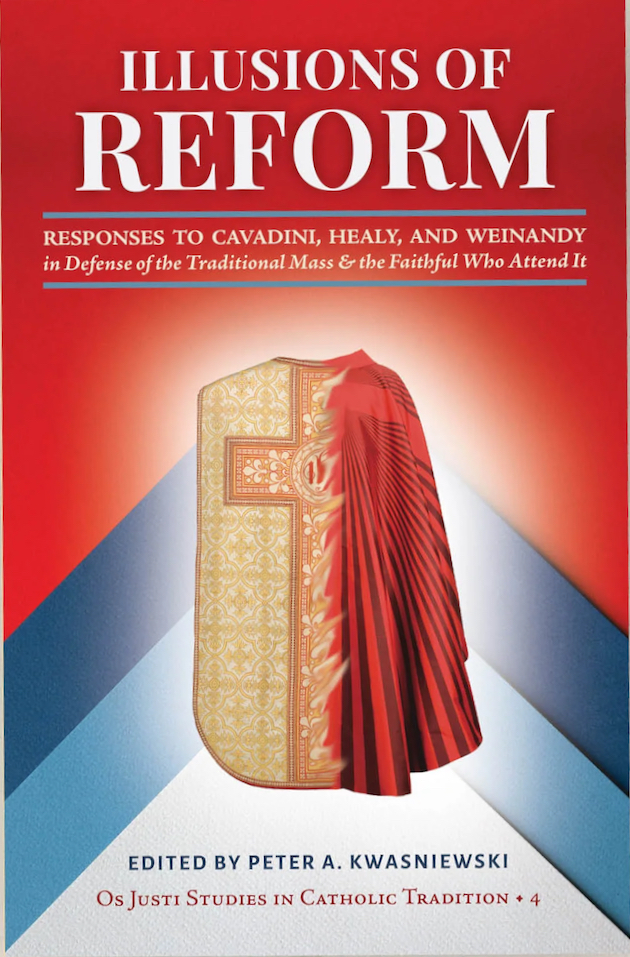
Illusions of Reform: Responses to Cavadini, Healy and Weinandy in Defense of the Traditional Mass and the Faithful who Attend it
Peter A. Kwasniewski, Ed.
Os Justi Press, Lincoln, NE 2023
Hardly had I finished reading one book from Os Justi press (1) when there appeared a new entry in their series “Os Justi Studies in Catholic Traditionalism.” In this series, edited by the indefatigable Peter Kwasniewski, Os Justi offers serious commentary on current Church issues of special relevance to the Catholic Traditionalist movement.
In 2022 John Cavadini, Mary Healy, and Thomas Weinandy published a series of articles defending Pope Francis’s war against Traditionalism (collectively, the “Synoptic Look”).2) Peter Kwasniewski has now assembled in Illusions of Reform a volume of responses. The heart of Illusions of Reform is two series of articles by Jane Smith and Peter Kwasniewski that set out a detailed, comprehensive critique of the Synoptic Look. There follow essays from a range of writers, many associated with Traditionalism, discussing one or the other aspects of the Synoptic Look. Two of the contributors (Peter Kwasniewski and Alcuin Reid) were directly denounced by Cavadini, Healy and Weinandy in the Synoptic Look.
I think the contributors to Illusions of Reform did a good job in refuting the assertions and calumnies of the Synoptic Look. If the contentions of Cavadini, Healy and Weinandy trickle down to the bureaucrats of the Roman Catholic Church in rectories, schools, organizations and parishes, Illusions of Reform will provide to the Traditionalist faithful a handbook of responses. Moreover, the authors of the essays in this book sometimes exceed their immediate task of responding to the Synoptic Look and break new ground. I was intrigued, for example, by Peter Kwasniewski’s argument that the fresco of the Last Supper by Leonardo da Vinci (and other similar paintings for monastic refectories) helped lead to an incorrect theory of a versus populum celebration of the mass. Alexander Battista observes that the Synoptic Look’s theological condemnation of the Traditional Roman liturgy also applies in large part to the eastern rites of the Catholic Church, which (still?) remain in good standing with the Vatican. And there is Alcuin Reid’s contribution, in which he confronts the invective directed against him in one section of the Synoptic Look.
It seemed to me, however, that debating the assertions of the three authors is of limited utility. For this response (and even the title Illusions of Reform) presumes that Cavadini, Healy and Weinandy are proposing for public discussion their scholarly, if mistaken, opinions. As Alcuin Reid writes, it’s clear that these authors had no interest in dialoguing with anyone or of convincing anyone. It is instructive that the authors of the Synoptic Look refused permission to reprint their essays in Illusions of Reform and likewise rejected the opportunity to rebut the critical essays published there. Similarly, they made no attempt in their own essays to “engage with” any of the literature critical of the Council or the Novus Ordo that has appeared over the last 60 years.
Indeed, the analytical framework of Cavadini, Healy and Weinandy leaves hardly any room for dialogue. For the position of the authors, identical with that of Pope Francis himself, is that Vatican II is the work of the Holy Spirit, the liturgical movement is the work of Holy Spirit, the new mass is the work of the Holy Spirit. Thus, any attempt even to question any of these items is to directly oppose God. As is stated in the Synoptic Look, for some people (the Traditionalists):
there can be a danger of loving a form of the Mass more than one loves Jesus (3)
(A startling claim – from a charismatic, even Protestant perspective?). It’s remarkable how easy it is for members of the Catholic establishment to discern the will of God in this world! It’s almost as easy as was their ability in the 1960’s to identify the signs of the times.
And this same Holy Spirit seems completely capable of contradicting Himself. One of the most extraordinary aspects of Cavadini, Healy and Weinandy’s essay is their extended argument that the Traditional Mass was theologically flawed; that Catholics, prior to the Council, prayed to “God” instead of to “Christ” or the “Trinity.” Thus, it would seem the Holy Spirit abandoned the Church and the bulk of the Catholic population to theological error for untold ages. I recall hearing such arguments in the distant past but never with such insistent radicalism.
If the theology of the authors of the Synoptic Look excludes rational discourse, to argue with them over historic facts is likewise useless. For example, regarding the origins of liturgical movement, it is said:
Like almost all renewal movements in Church history, such as the rise of the Franciscans and Dominicans, the liturgical renewal movement was from the ground up. In this case, it was initiated and primarily grew from within a monastic setting…. (4)
Cavadini, Healy and Weinandy thus believe that the liturgical movement between 1900 and 1950 and the emergence and expansion of the mendicant orders in the first half of the 13th century are historical phenomena of comparable origin and significance. It’s clear that any recourse to historical reality with authors exhibiting historical judgment of this kind would be futile.
In my view, Cavadini, Healy and Weinandy’s opus closely resembles the DEI declarations found universally nowadays in the publications of corporations, governmental units and educational institutions: a demonstration of loyalty to the ideology of an establishment rather than an honest expression of personal or scholarly opinion. But if the content of the Synoptic Look is unimportant, nevertheless, who wrote it, where it’s being published and the style in which the message is conveyed are important.
Now all three authors of the Synoptic Look are certified members of the Catholic establishment and at least two are currently in the current employ of Catholic educational institutions. Moreover, they seem relatively uninvolved in the Catholic progressive movement otherwise dominant on Catholic campuses. Their loyalty to the establishment is thus pure, unaffected by further demands for change. Given the policies of Francis over the last ten years, it an increasingly rare stance among “Catholic Conservatives!”
Professor Cavadini is director of the McGrath Institute for Church Life at Notre Dame University, the publisher of the Church Life Journal in which appeared the essays of the Synoptic Look. 5) What is this Institute? It (or its predecessor) was founded in 1970 by a noted radical priest of that era, Monsignor John J. Egan, who remained associated with it for many years. (6) In the course of time, the Institute seems to have been absorbed into the broad mainstream of the so-called American Catholic Church. It advertises itself as a facility to ”form and empower” Catholic leaders. It appears, however that these leaders are mainly fellow bureaucrats in the employ of the Church. Indeed, the Institute itself seems to have an extraordinarily large number of administrators. If we peruse the news items on the Institute’s website we see only a happy world of more grants from secular foundations, more money from Notre Dame alumni, more nebulous, undemanding articles and more programs.
The McGrath Institute is thus emblematic of the modern Church establishment: bureaucratic, self-satisfied, pontificating, discoursing solely with fellow members of its own isolated world but directing abuse and invective against officially designated adversaries. Yet, since the Council, the forces represented by the Institute have been the consistent winners within a Church otherwise mired in steep decline. It is they and their more radical colleagues who have spearheaded the synodal path, first in Germany and now throughout the entire Church. Yet clearly such entities are incapable of communicating with, let alone evangelizing, either the outside world or the non-practicing majority of Catholics. To outsiders, they are the ugly face of official Catholicism. It is the Traditionalists, so much despised by them, that can mobilize individual imitative and commitment and unlock the evangelizing force of the Christian faith. I think this contrast will be patently obvious to anyone who reads both the Synoptic Look and Illusions of Reform – which I highly recommend.
- Joseph Shaw’s The Liturgy, the Family and the Crisis of Modernity.
- Now these essays are assembled and available at: A Synoptic Look at the Failures and Successes of Post-Vatican II Liturgical Reforms, Church Life Journal (12/1/2022).( the “Synoptic Look”) This title is a pseudo-objective replacement for the more aggressively anti-Traditionalist titles of some of the original posts (“The Way forward from the Theological Concerns with the TLM Movement,” “Papal Responses to the emergence of the TLM Movement”).
- Synoptic Look, “Theological and Pastoral Concerns with the Tridentine Mass Movement”
- Synoptic Look, “The Rise of the Liturgical Renewal”
- https://mcgrath.nd.edu
- “History and Mission”
30
Jun
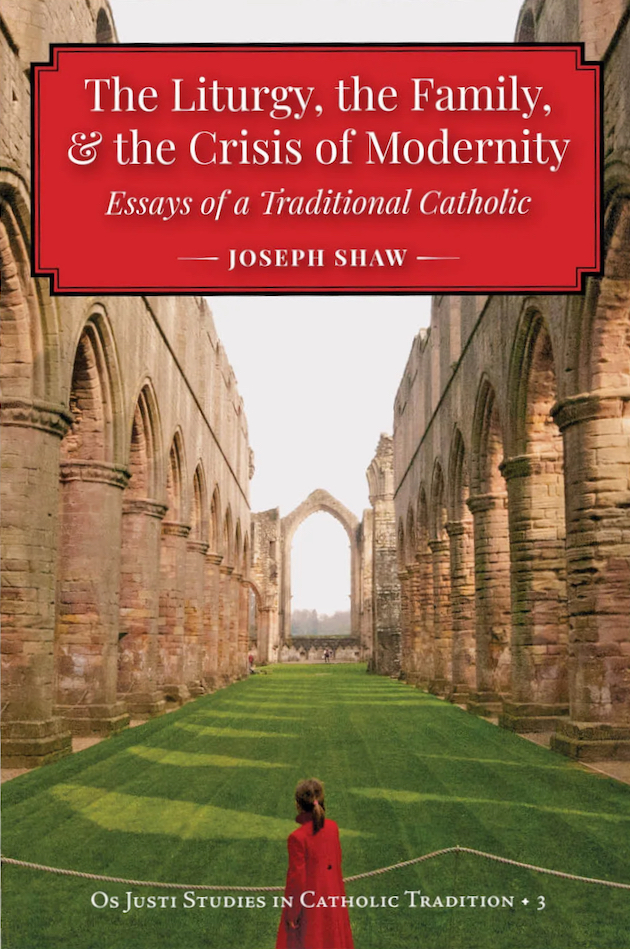
By Joseph Shaw
Os Justi Press (Lincoln, NE, 2023)
Mr. Joseph Shaw, the chairman of the Latin Mass Society of England and Wales and president of the International Una Voce Federation, offers us a book of reflections on the Church and society of today and especially on the position of the Traditional Catholic Movement. Even though the author taught philosophy at Oxford University for many years, The Liturgy, the Family and the Crisis of Modernity is no abstract treatise. Our author, by virtue of his office, is squarely in the midst of the liturgical wars of today. Shaw returns again and again to the refutation of attacks launched against Traditionalists by their enemies within the Church. The Liturgy, the Family and the Crisis of Modernity serves, first of all, as a valuable arsenal of information and arguments for the Traditionalist. And this is an honorable role! Wasn’t the City of God also inspired by the need to respond to contemporary calumnies against Christians after the fall of Rome?
Shaw, however, goes far beyond the role of a controversialist. He works to understand what is happening in the Church today. In contrast to most commentators on liturgical issues, Shaw knows that the Church is embedded in history and in society. As the title of this collection of essays indicates, liturgical questions cannot be severed from other theological issues and from the daily life and experience of the faithful. This book develops these interactions and influences. Shaw sets the controversies and deviations of the moment in a broader historical, philosophical and sociological context. This deeper understanding will be necessary to the Traditionalist in the continued conflict between the Church establishment and Catholic Tradition – a struggle that may last years, decades or even generations.
Mr. Shaw divides his work into three sections: The first, “Liturgy,” deals with the liturgy, its meaning and function. The second part, “Crisis,” addresses issues of conflict within the Church -not just the struggle over the Traditional Mass but also clerical sex abuse and sex education. Finally, “Family” explores underlying sociological causes of the dysfunctions Shaw has described. Certainly, “Family” is the broadest topic and the most controversial, given the author’s frank discussion of the role of feminism and feminization in the current crisis of Church and society. I recall that Cardinal Francis George of Chicago came a cropper when he dared to express critical thoughts regarding feminism.
Let me give a few examples of the “Shavian” insights. The author’s discussion of “active participation” is among the clearest I have ever read. The Conciliar reduction of participation to comprehension is fundamentally flawed:
However, saying that understanding texts and ceremonies aids participation is not the same as saying it is necessary for participation. Still less is it to say that participation is aided by changing prayers and ceremonies to make them easier to understand. … A poem or a painting can engage us powerfully without knowing very clearly what it is about. An explanation may well enhance our participation in it, but we would not be inclined to say, of those who do not have the benefit of such an explanation, that they were incapable of real participation in, say, William Blake’s poem Jerusalem or the Wilton Diptych (p.25)
A related theme is the Catholic establishment’s claim that only “elitists” can “get anything” from the beauty and sacrality of the Traditional Mass. It is obvious from the life of Traditional parishes today – as well of that of the entire Church until the 1960’s – that beauty and sacrality appeal to all groups of the Catholic population, regardless of income, education, race etc. In contrast, it has been the most educated and wealthiest segments of the Catholic population who have been most hostile to the Traditional liturgy. Shaw quotes here the disdainful and scurrilous remarks of the egregious Fr. Reginald Foster – the Vatican’s Latinist! – on the liturgical role of Latin 1) (pp. 72-73). Indeed, Shaw points out it is this clerical “elite” that has convinced itself that the unlettered “masses” cannot participate in the Traditional Mass.
Speaking of Latin, Shaw finds that, well before the Council, the Church had difficulty articulating a principled and coherent defense of the liturgical role of Latin. (p.83). As in so many other issues, the current Traditionalist’s understanding of the purpose of Latin in the liturgy is far more sophisticated than that of his pre-conciliar forbears. Or it at least can be – if he reads the growing literature (like this book) on the subject!
Rebutting Pope Francis’s relentless denunciations of “rigid” Catholics, Shaw finds the origin of this calumny in a pseudo-Freudian analysis of the rise of Nazism. The Frankfurt school made the historically false claim that the intact family and the society associated with it created a mythical “authoritarian personality” that allegedly spawned fascism. This is the dubious source of Pope Francis’s constantly repeated characterization of “rigid” priests and laity as being diseased.
There have been studies over the years linking some of the current deviations of the “Conciliar Church” to a centuries-long process of “feminization” of Catholicism as found in devotions and schools of spirituality. Shaw develops the intriguing argument that the Novus Ordo, with its exclusive emphasis on verbal communication, reflects more clearly a feminine sensibility, whereas ritual and mystery appeal more to a masculine sensibility. Perhaps! – but I don’t see any disproportionate rush of the “devout sex” to the Novus Ordo. (pp. 236-371)
As one who has given some thought to the disastrous effects of ultramontanism on the Church, I particularly welcomed Shaw’s perceptive commentary on the subject:
We know, with hindsight, that the centralization of the Church has made her painfully vulnerable to the capture of central institutions by corrupt individuals or misguided ideas. It is no new thing in the history of the Church for there to be corruption in Rome (as I write the trial of Cardinal Becciu is ongoing) (It still is! – SC). What is new, and disastrous, is the diminishment of alternative sources of influence, initiative and prestige, from which Roman problems could be addressed without being cut off immediately by the very people causing the problems. I have in mind things like monastic reformers, reforming bishops, fearless preachers, or even the Holy Roman Emperor.
….
[W]hat the Church needs in dealing with a unified threat is not the brittle strength of the centralized control center, but the flexible resistance of ten thousand little platoons with the self-sufficiency and initiative to carry on guerilla warfare even when the enemy has won the big battles. What at needs, in fact, is the family. (pp. 277-78)
Shaw’s observations are entirely in accord with both human and spiritual wisdom. Did not Machiavelli make the same point regarding the weakness of rigidly centralized states? Later, in the first half of the 19th century, the German Romantics wrote of the need to foster intermediate corporations situated between individuals and the central authority of the state. And even the papacy in its most explicitly ultramontane phase propounded this Catholic understanding of subsidiarity. Joseph Shaw’s insight, however, is to identify the hierarchically organized, so-called “traditional” family as the specific cell of resistance in the war for the defense of the faith. Regardless of all the forces seeking to destroy ii, the family still possesses unique strength, for it is both a natural and, in Christian marriage, supernatural institution. But in the battle for the faith the family cannot function in isolation as an individual atom but must always remain in union with others as a member of the Body of Christ.
I hope the above conveys the flavor of Mr. Shaw’s book. Do I need to add that it is all well and clearly written? I would recommend this book to the Traditionalist looking both for arguments in his current struggle for survival but also for an analysis of the overall causes of the current crisis. It is this deeper understanding that will help preserve us from mistakes and deviations arising from purely reactive and opportunistic stances.
The Liturgy, the Family and the Crisis of Modernity is available HERE.
- Fr. Foster was (perhaps unwittingly) echoing Heinrich Heine, who in the 1830’s sneered that the prostitutes of Paris spoke better French than the canonesses (aristocratic ladies) of Germany…..
28
Jun
The world premiere of a new opera entitled Gracchus will be presented at the Palace Theatre in Stamford, Connecticut, at 4 p.m., August 19, 2023.
Gracchus is described as an opera of civic redemption, with Christian allegory, set in second century‒B.C. Rome.
The opera was composed by Mr. David Hughes, the libretto being the work of Rev. Fr. Richard Munkelt. Fr. Munkelt is a diocesan priest in residence at Saint Anthony’s Chapel in West Orange, New Jersey. Mr. Hughes serves as Music Director at Saint Patrick’s Oratory in Waterbury, Connecticut. Both parishes, administered by the Institute of Christ the King Sovereign Priest, are dedicated to providing the traditional sacraments to the Catholic faithful. Please consider purchasing tickets to what is sure to be a very special opportunity and supporting the creative work of those who have given so much of their lives to the Latin Mass Community. Tickets can be purchased, and more information found, on their website at gracchusopera.com.
27
Jun
Solemn Pontifical Mass in Newark
Sunday July 16, 2023 @ 3PM
Solemn Pontifical Mass in the Extraordinary Form
Celebrated by His Excellence Arthur J. Serratelli, Bishop Emeritus of Paterson
Our Lady of Mt Carmel
259 Oliver St
Newark, NJ
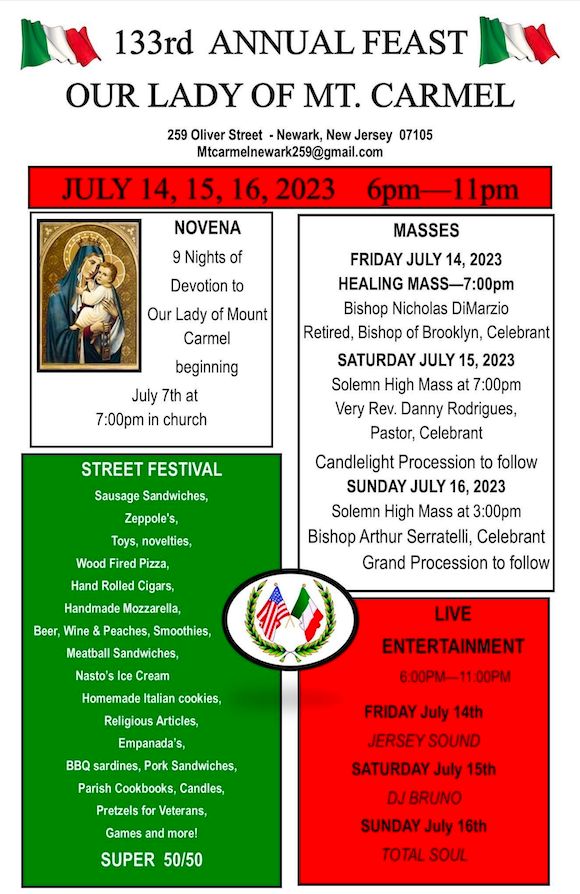
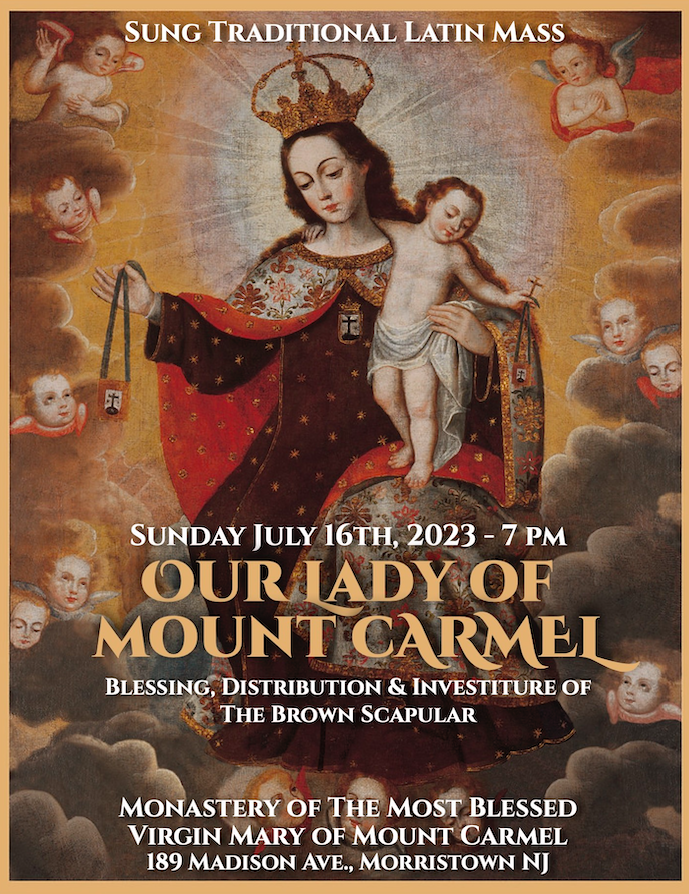
25
Jun
Contact us
Register
- Registration is easy: send an e-mail to contact@sthughofcluny.org.
In addition to your e-mail address, you
may include your mailing addresss
and telephone number. We will add you
to the Society's contact list.
Search
Categories
- 2011 Conference on Summorum Pontifcum (5)
- Book Reviews (95)
- Catholic Traditionalism in the United States (24)
- Chartres pIlgrimage (17)
- Essays (176)
- Events (670)
- Film Review (7)
- Making all Things New (44)
- Martin Mosebach (34)
- Masses (1,343)
- Mr. Screwtape (46)
- Obituaries (15)
- On the Trail of the Holy Roman Empire (22)
- Photos (347)
- Pilgrimage Summorum Pontificum 2021 (7)
- Pilgrimage Summorum Pontificum 2022 (6)
- Pilgrimage Summorum Pontificum 2023 (4)
- Sermons (79)
- St. Mary's Holy Week 2019 (10)
- St. Mary's Holy Week 2022 (7)
- St. Mary's Holy Week 2023 (7)
- St. Mary's Holy Week 2024 (6)
- Summorum Pontificum Pilgrimage 2024 (2)
- Summorum Pontificum Pilgrimage 2025 (7)
- The Churches of New York (198)
- Traditionis Custodes (49)
- Uncategorized (1,375)
- Website Highlights (15)
Churches of New York
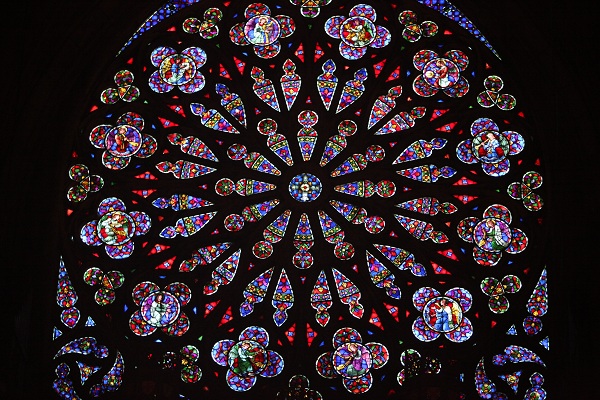
Holy Roman Empire

Website Highlights
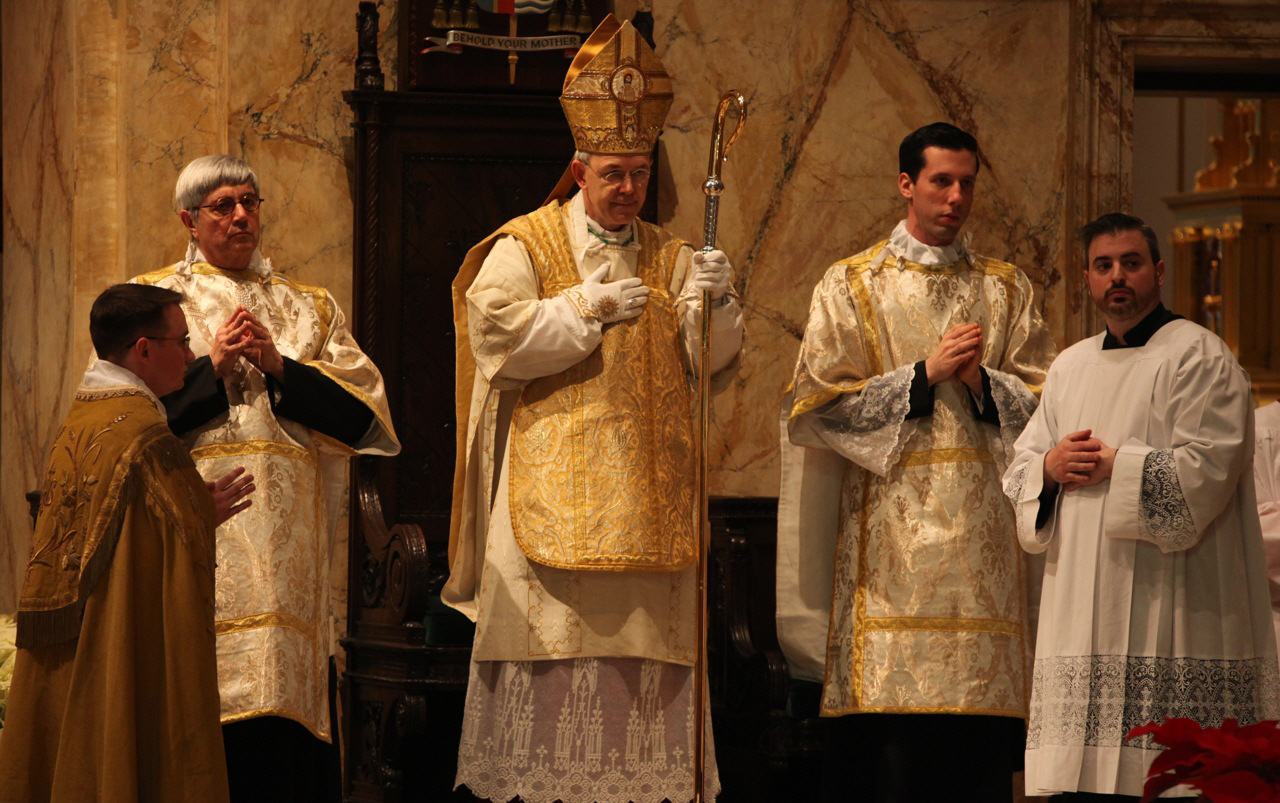
Archives

[powr-hit-counter label="2775648"]

